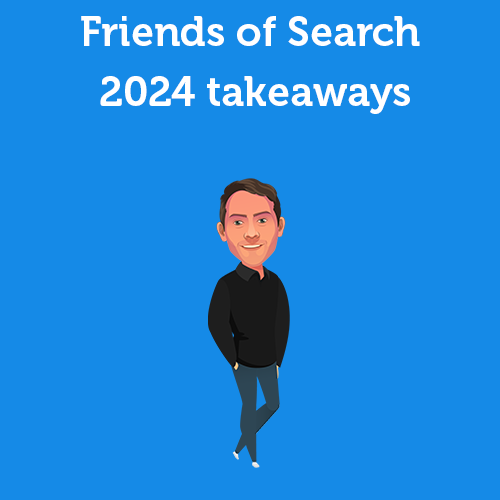Menu
Table of contents
In a client case, you show what you are good at, what the results of your work were, and what the client thought of it. To get you started with writing a compelling client case, I've listed 10 helpful questions for you.
Question 1: Who are you writing the article for?
Before you start writing, you really need to ask yourself who it is writing for. Is it for a specific person within your target audience? And is that a CEO? Or is that an employee?
After all, for whom you write determines the content, writing style and headings. After all, in a customer case, you want to address the pains and gains of your target audience. And so your case must connect to that of the reader (your target audience, that is).
Question 2: What was the goal?
Now that you know who you are writing it for, the next step is to determine the dot on the horizon of the client you are writing the customer case for. After all, where did he or she want to go?
Did they want a solution to a problem? Did they very specifically want something accomplished by a certain date? Or were they simply looking for the right party?
The purpose is important because readers of customer case studies can relate to the problem. 'Oh, we have that problem too, so they can help us with that too'.
And that, of course, is what you want to achieve.
Question 3: What did you do to achieve the goal?
The answer to this question is often the biggest part of the customer case. And that makes sense, of course, because you like to tell what you did.
But it is by no means the most important part. That's where a lot of people go wrong. They spend paragraphs talking about exactly what they did, but that's not what a customer case is for.
Keep it simple when it comes to what you have done.
Above all, focus on the things around it. These provide recognition, convince the reader and are going to be the deciding factor.
Question 4: What were the customer's pains and gains during the process?
The pains and gains I mentioned earlier this article. Your client's pains are things your client runs into. Often these are those recurring things that are an eyesore and cost time, money and energy.
For example, poor website findability.
Your customer's gains are the benefits it gets when the pain is solved. For example, does your customer get more time because it takes him less time? Or does it make him more money?
For example, more sales because the website has become more findable.
Question 5: What was the result?
At the bottom line, what matters most to many entrepreneurs is what the result was. For example, the revenue your work generated, what costs it saved, what time it saved, etc.
Mention that in your customer case as well! Unfortunately, I often see it happen that parties do not want to share this because they think these are important figures and do not want competitors to know these figures.
I get that, but there is no easier way to bring in new customers by showing super nice green scores, numbers and figures.
Question 6: What did the client think of the collaboration?
In my opinion, that is the most important part of a customer case. A customer case is called a CUSTOMER case for a reason.
The customer should be the focus. And that is why we put the customer's review as high as possible in the customer case. After all, you can tell us what you did, what the result was and what the customer thought of it.
But it's much better to let the customer have his or her own say.
And should they have budget, absolutely have testimonial videos made. Then you are totally winning.
Question 7: Is there a customer case for all your target audiences?
In terms of content, we have now had the most important thing. The foundation of your customer case is now in place. It's just time for the finishing touches.
And we start with the different audiences.
Often companies have multiple audiences they focus on. Think of self-employed people or real estate agents, for example. Or CEOs and companies with 100+ employees.
Whatever your target audience, make sure there is a customer case for each one. After all, if you're a CEO on a website and you see 5 customer cases listed for self-employed people, that's a turnoff.
"That one only works for small parties.
But the reverse is also true. If a ZZP sees that you only work for multinational companies, his reaction is "That one only works for big clubs.
If you want to reach both audiences, then a single customer case is a missed opportunity. But also remember that you can do this very deliberately. Do you only want large parties as customers? Then don't write customer cases of the smaller customers.
Question 8: What can and cannot I show/share?
If you've listened to my questions, there are numbers in your client case, you've disclosed and written out a lot. But are you allowed to share/show all that?
You should share that, before you start writing, of course, with the client. Because he or she may not want you to write a case at all.
Because their competitors may not see it, for example, or people may not know that the company has a particular kind of problem that they are using you for. So tune that out first.
Question 9: Did I send the item to the customer before it went live?
Suppose the customer did approve the customer case, it is important that you don't just put it live. Always share the customer case with the client before doing so.
After all, there can always be facts in there that are not correct after all, figures that should not be shared after all, or other peripheral issues that should be different.
But it can also be a positive adjustment. The client may still want to add important information. That will make your case even better.
Question 10: Have I added enough visual content?
We have arrived at the final question: do you have enough visual content? Enrich your client case with as much relevant content as possible. Think images, videos, quotes, graphs, links to your services and more. But don't add the visual content as padding. Only add it if it really adds value to the case!
What is a customer case and why is it useful to use them?
A customer case is a description of a customer's experience with your product or service. It is useful to use them because they can convince potential customers to also choose your product or service.
How can I use customer cases to grow my business?
You can use customer cases on your website, in your marketing materials and in your sales pitch to show how your product or service helped solve your customer's problem.
Should I ask permission from my customers before sharing their experiences in a customer case?
Yes, it is important to ask permission before sharing your customers' experiences in a customer case study. This not only gives you legal protection, but it also shows that you respect your customers' privacy.
What makes a good customer case?
A good customer case contains a clear description of the customer's problem, how your product or service helped solve that problem, and what results the customer achieved. It is important to be specific and concrete and use numbers and facts to back up the results.
Are customer cases relevant to all types of businesses?
Yes, customer cases are relevant to all types of businesses, regardless of size or industry. Whether you are a B2B or B2C company, customer cases can help communicate the value of your product or service to potential customers.











Written by: Daniel Kuipers
Daniel is the founder of Online Marketing Agency. He constantly scours the Internet for the latest gadgets and tactics and blogs about them in understandable language. Well, sometimes.